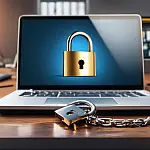ATM Fraud: What It Looks Like and How to Avoid ItLast night whilst down the local pub my credit card skimmed at an ATM I was using and my account emptied of all it's contents.
I was one of the many victims of ATM fraud having used a cash point on the wall of a Lloyds TSB branch. Initially, I thought that the machine had simply broken as it would not return my card after I requested cash. When I phoned the call centre to report the fault they were unable to help or offer any kind of support.
I knew that I needed to report my card stolen and have it cancelled - but the number to call was on the back of the card! I had no choice but to leave the cash point, cross the road and get the number from my sister's card. I was only out of sight of the machine for a minute or two but this was enough time for somebody to retrieve the card and covert camera and run off with it. By the time I had phoned my bank to cancel the card, they had already emptied it.
Luckily Halifax was more helpful than Lloyds was, and I did recover all the money that I had lost as well as having a new card and pin issued.
I always thought that it would be easy to spot a device on a cash machine, however, I learned the hard way that it is very difficult. As you can see in the image, this card machine looks perfectly fine - apart from the skimmer on the card slot. If you didn't know it wasn't supposed to be there you wouldn't think anything of it.
Lessons learned and I will be a lot more vigilant in the future.
How to Avoid ATM Fraud
- Don't share your card or PIN with anyone else. Even spouses who share a bank account should have different PINs for their debit cards.
- Examine an ATM before using it. Don't be afraid to wiggle the card reader or PIN pad. If either appears loose or falls off the machine, it may indicate the presence of a skimmer. Additionally, if any features seem abnormal, or if you notice a hidden camera, notify bank staff or the police immediately and don't use the ATM.
- Take note of the people ahead of you in line for the ATM. If you see unusual behaviour such as a person using more than one card to get cash, or someone who appears to be tampering with the machine, don't use it and call the police.
- Be wary of potential phishing messages via text or email that claim to be from your financial institution. Banks will never ask for sensitive information such as your debit card number or PIN.
- The same thing goes for phone calls purportedly from your bank. Call the customer service number on the back of your card to make sure you're talking to a bank employee instead of a scammer.
- Take advantage of every security feature your bank offers.
- Most financial institutions offer alerts for unusual account activity, such as out-of-state purchases or larger transactions. Make sure you're signed up to receive these notifications.
- If your debit card is lost or stolen, or you believe sensitive information such as your PIN, card number, or online banking login has been compromised, call your bank right away.
- Make it a habit to review your account activity online and/or through monthly statements. If you spot any suspicious activity, talk to your bank immediately. Even the most minuscule of withdrawals, such as 0.01, could be a warning sign of a financial scammer verifying the legitimacy of your debit card information before making a larger transfer.
More information can be found on these sites: Would You Have Spotted the Fraud? and 5 tips to protect yourself from ATM fraud.











